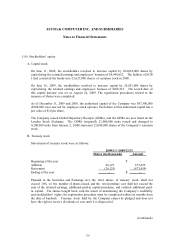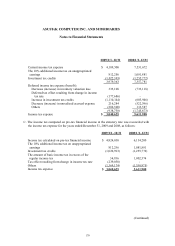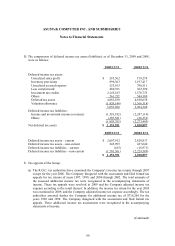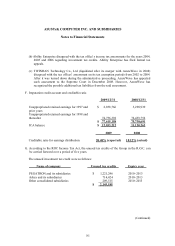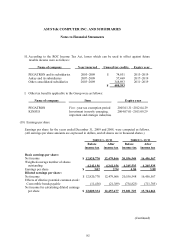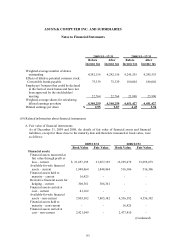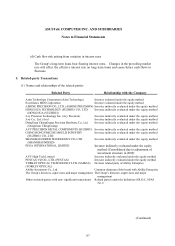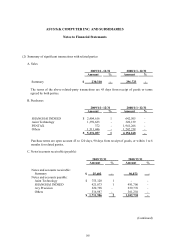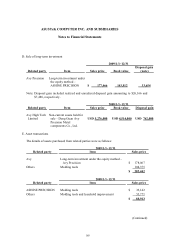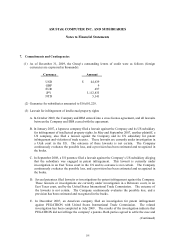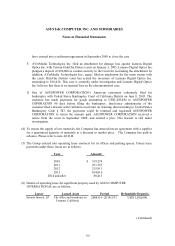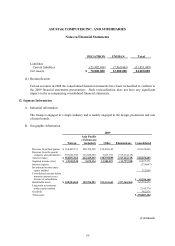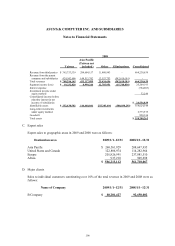Asus 2009 Annual Report Download - page 190
Download and view the complete annual report
Please find page 190 of the 2009 Asus annual report below. You can navigate through the pages in the report by either clicking on the pages listed below, or by using the keyword search tool below to find specific information within the annual report.186
ASUSTeK COMPUTER INC. AND SUBSIDIARIES
Notes to Financial Statements
(Continued)
(ii) The open-end funds & stocks of listed companies held by the Company are classified as
financial assets measured at fair value through profit or loss and available-for-sale
financial assets. As these assets are measured at fair value, the Group has risk
exposure related to changes in fair value in an equity securities market.
(b) Credit risk
(i) Credit risk means the potential loss of the Group if the counterpart involved in that
transaction defaults. Since the Group’ s derivative financial instrument agreements are
entered into with financial institutions with good credit ratings, management believes
that there is no significant credit risk from these transactions.
(ii) The primary potential credit risk is from financial instruments like cash, bank deposits,
equity securities under non-equity method, and accounts receivable. The Group
deposits cash in different financial institutions. Equity securities under non-equity
method were funds and listed stock issued by companies with good credit ratings.
The Group manages credit risk exposure related to each financial institution and
believes that there is no significant concentration of credit risk of cash and equity
securities. As the customers of the Group have good credit and profit records, the
Group is able to evaluate the financial conditions of these customers in order to reduce
credit risk of accounts receivable.
(c) Liquidity risk
(i) The Group’ s objective is to maintain a balance of funding continuity and flexibility
through the use of financial instruments such as cash and cash in bank, and bonds
payable.
(ii) The open-end funds & stocks of listed companies held by the Company have publicly
quoted prices and could be sold at the approximate market price. As to the forward
exchange contracts, there are no significant financing risks due to expected sufficient
capital. Management believes that the cash flow risk is not significant because
contracted foreign currency exchange rates are fixed.
(iii) Equity investments recorded as financial assets carried at cost do not have reliable
market prices and are expected to have liquidity risk.
(iv) The derivative financial instruments for hedging are intended mainly to hedge the
exchange rate risk from future cash flows. The forward contracts’ duration corresponds
to the Group’ s foreign currency future cash flows. The Group will settle the foreign
currency liabilities at expiration of the contracts. Thus, management believes that the
cash flow risk is not significant.


